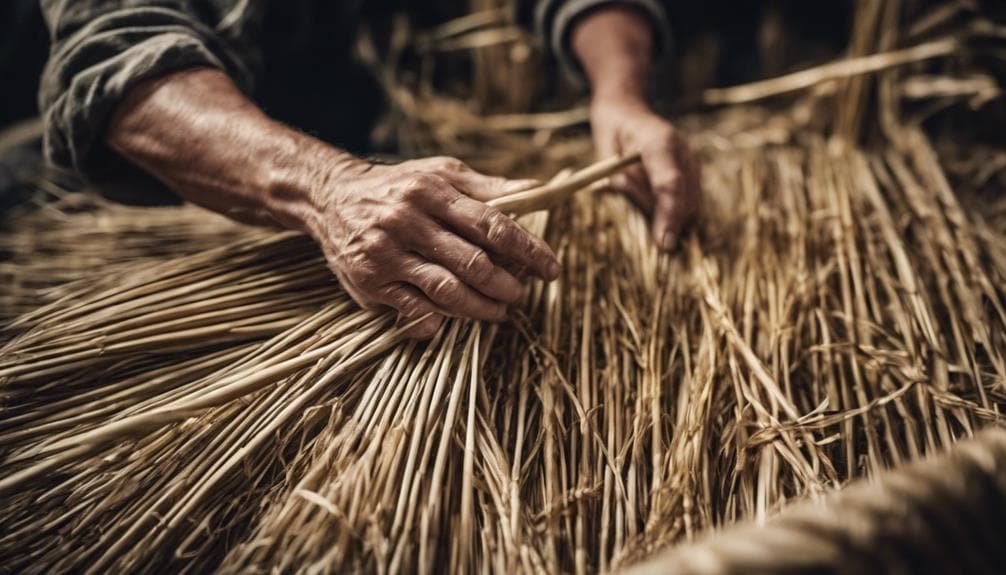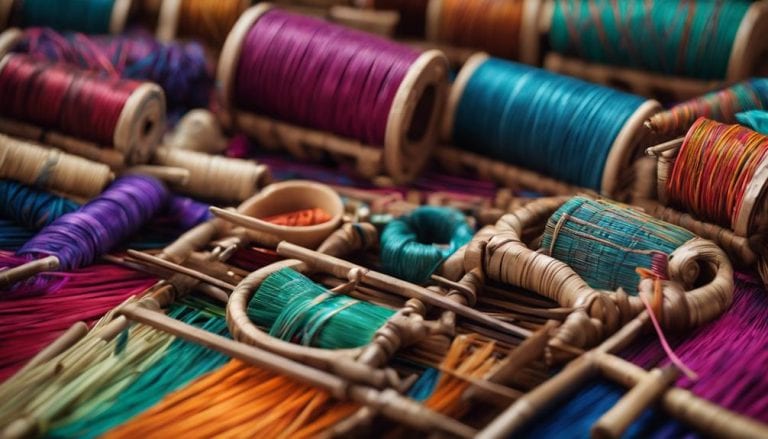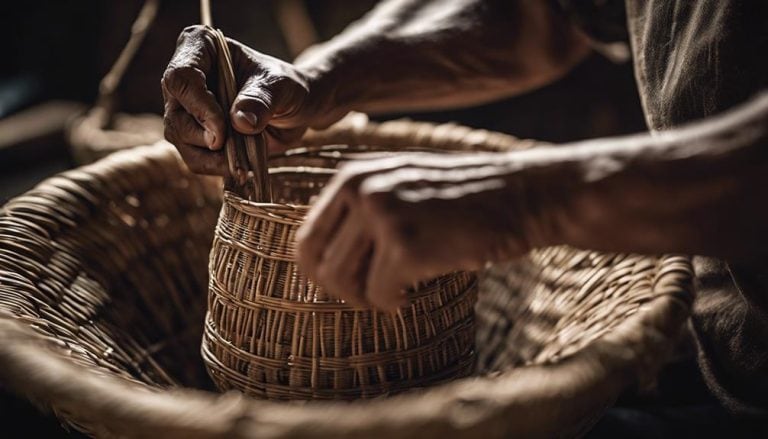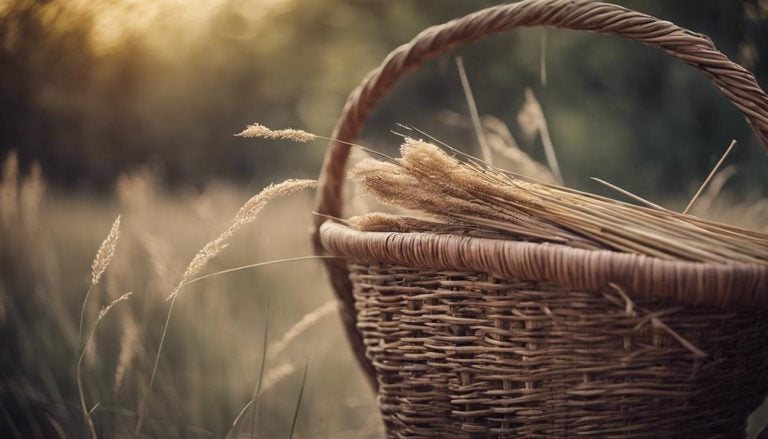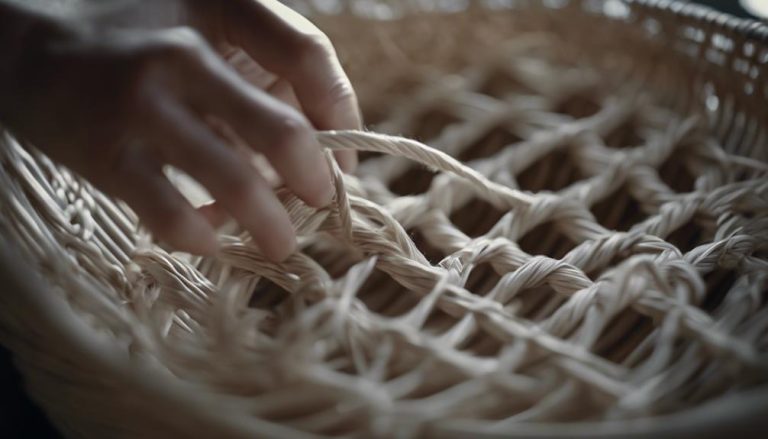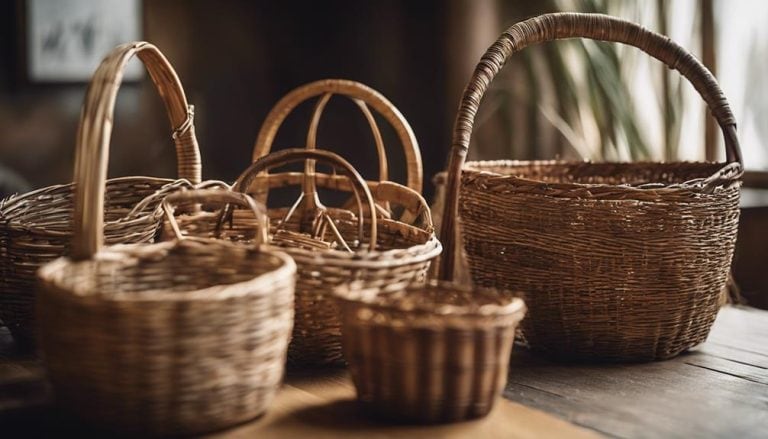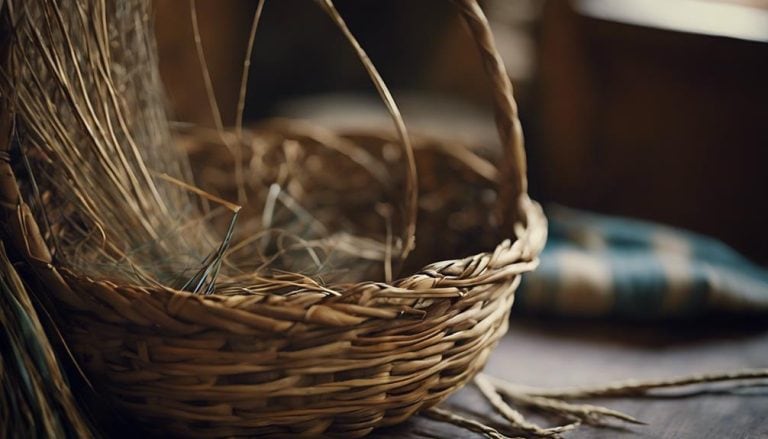Rush Reeds for Traditional Basket Making
Rush reeds are the lifeblood of traditional basket making; their importance cannot be overstated. The intricate process of harvesting and weaving rush reeds is a skill that has stood the test of time, connecting artisans to their cultural roots profoundly.
The durability and flexibility of rush reeds make them a sought-after material for creating baskets and an array of other items. Let’s explore the fascinating world of rush reeds and the artistry they inspire in craft-making.
Rush reeds are essential for traditional basket making. They are a plant material used to weave baskets and can be found in wetlands and marshes.
Key Takeaways
- Rush reeds symbolize prosperity and cultural connection.
- Harvesting in July-August ensures quality and durability.
- Traditional uses blend strength, pliability, and artistry.
- Modern applications emphasize sustainability and innovative designs.
Origins of Rush Reeds
The journey of rush reeds as a fundamental material in traditional basket making begins with their ancient origins rooted in civilizations like Egypt and Greece. These ancient civilizations recognized the cultural significance of rush reeds, utilizing their flexibility and abundance in wetland areas to craft beautiful and functional baskets.
Rush reeds were not just a material but a symbol of resourcefulness and creativity, woven into daily life and rituals. In Egypt, rush reeds were intertwined with the Nile River’s fertile lands, symbolizing prosperity and abundance. On the other hand, the Greeks saw rush reeds as a connection to nature, blending harmoniously with their surroundings.
The art of basket making using rush reeds became a revered tradition, passed down through generations to honor the earth’s gifts and preserve ancient craftsmanship. Today, the legacy of these ancient civilizations lives on as artisans continue to weave stories and traditions into every basket crafted from rush reeds.
Characteristics of Rush Reeds
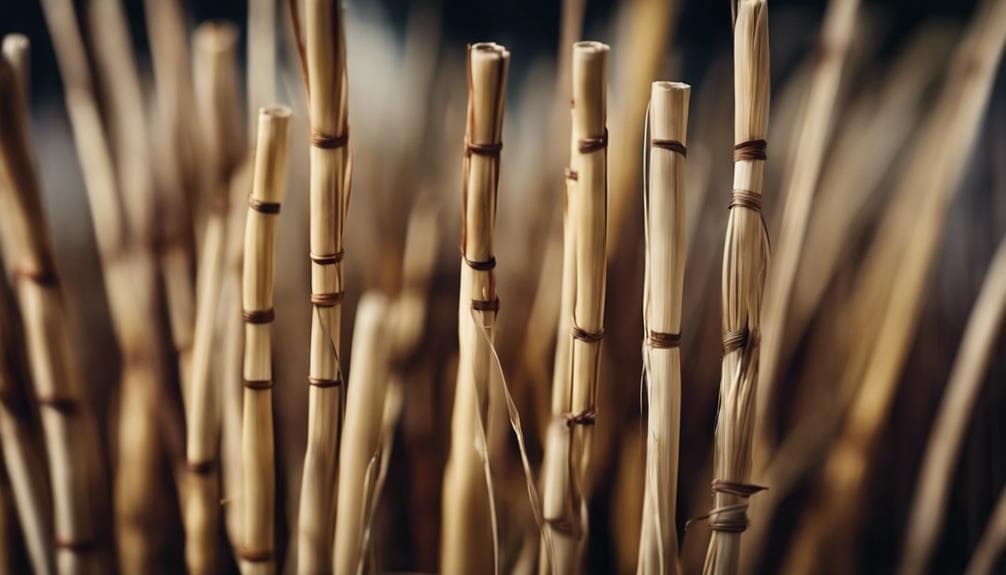
As we explore the world of rush reeds, their unique composition and versatile qualities come to light, shedding insight into why they have been cherished for centuries in traditional basket making.
- Strength and Flexibility: Rush reeds possess a remarkable balance of strength and flexibility due to their tough outer fibers and soft, pithy center. This dynamic combination allows for intricate weaving patterns while ensuring the durability of the final woven products.
- Weaving Techniques: The inherent properties of rush reeds, such as their pliability and resilience, make them well-suited for various weaving techniques. These reeds can be easily manipulated to create different textures and designs in baskets and other woven items, whether coiling, twining, or plaiting.
- Versatility in Basket Making: The strength, flexibility, and uniformity of rush reeds make them a preferred material for traditional basket making. From functional containers to intricate decorative pieces, these reeds offer artisans a versatile medium to express their creativity and craftsmanship.
Harvesting Rush Reeds
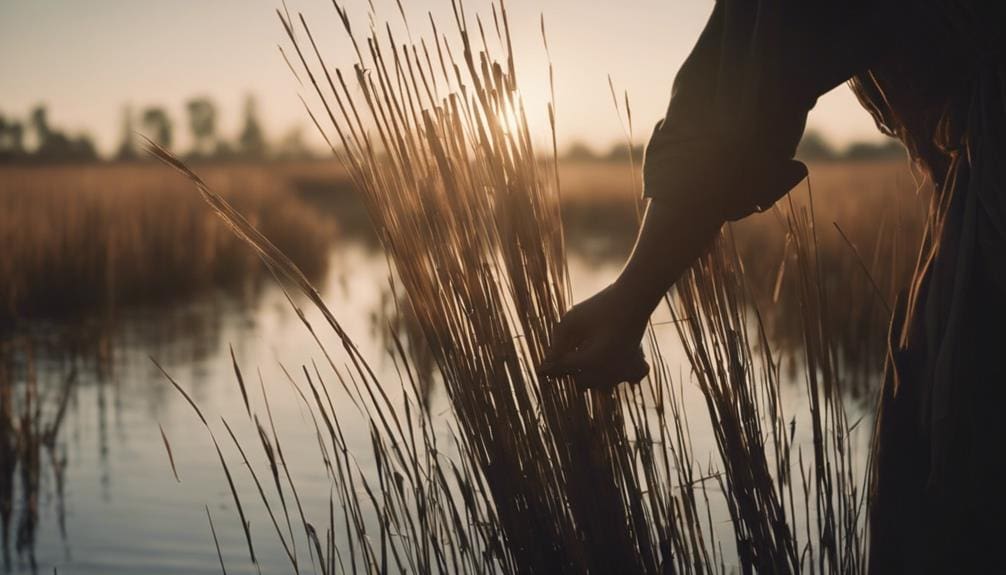
Navigating through lush wetland areas with a keen eye for clumps of rush reeds, one can appreciate the delicate process of harvesting this versatile material for traditional crafts. Preserving the wetlands is crucial for the sustainability of rush reeds, ensuring they thrive in their natural habitat.
When it comes to harvesting, using scissors to cut the rush reeds at their base is the recommended technique. This method allows for a clean cut, promoting regrowth and maintaining plant health. In the peak season of July and August, rush reeds are at their prime for harvesting. During this time, the rush reeds exhibit a soft foam-like center, often found in clumps with small brown flowers.
Quality sorting is essential when gathering rush reeds for basket making and other crafts. Sorting them by length and thickness ensures the final products have the highest quality and consistency. By harvesting rush reeds mindfully and during the optimal season, we can continue enjoying this natural material’s beauty and utility.
Processing Rush Reeds
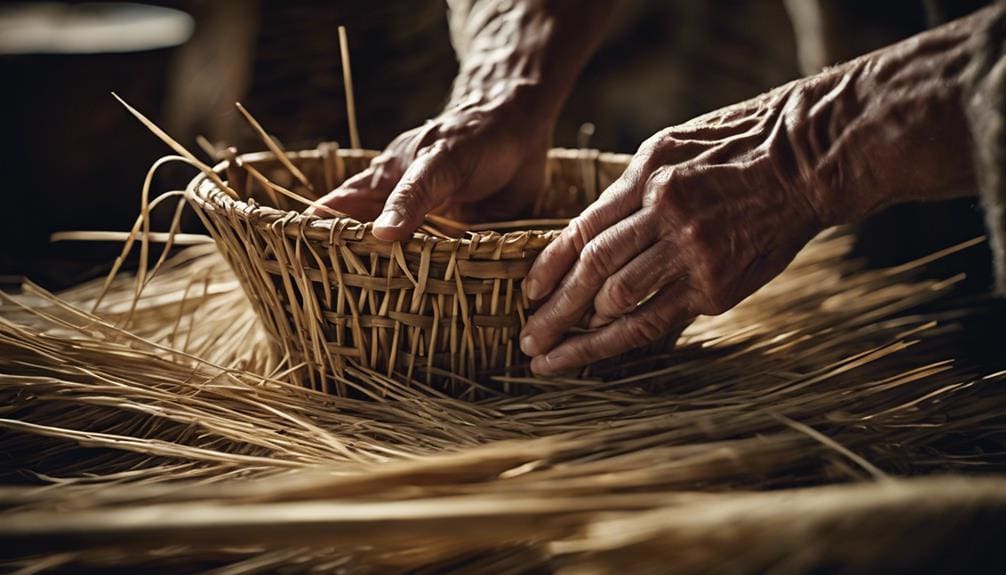
When processing rush reeds for traditional basket making, the initial step involves harvesting rushes in wetland areas with bushes. Here are three key steps in the processing of rush reeds:
- Cutting and Sorting: I carefully cut rushes at the base using scissors after harvesting rushes. Sorting them by length and thickness is crucial for later weaving, ensuring a uniform and sturdy basket.
- Drying and Soaking: Rushes possess a soft foam-like center, making them ideal for weaving. Drying them thoroughly is essential to prevent mold growth. Subsequently, soaking the rushes in water makes them pliable and ready for intricate weaving techniques.
- Sustainability Practices: Sustainability is at the heart of rush reed processing. Harvesting rushes in the right season, typically July and August, when small brown flowers appear, ensures the plants can regenerate. By following sustainable practices, we can continue creating beautiful and durable baskets for generations.
Traditional Uses of Rush Reeds
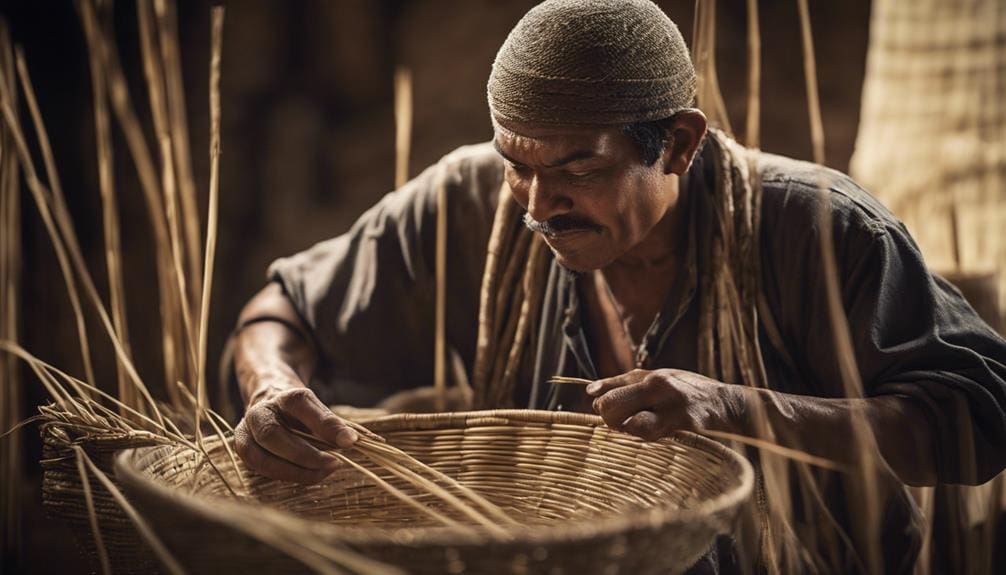
In traditional craftsmanship, rush reeds have long been revered for their exceptional pliability and enduring strength when woven into practical household baskets. These reeds hold significant cultural significance, symbolizing tradition and heritage in many communities. The historical evolution of rush reed basket making showcases the artistry and skills passed down through generations, reflecting the values and customs of different societies.
Artistic techniques vary from region to region, with each culture infusing its unique style and patterns into the baskets, creating pieces that are not only functional but also aesthetically pleasing. The environmental impact of using rush reeds in traditional basket-making is profound. Unlike synthetic materials, rush reeds are natural and sustainable, aligning with the principles of eco-friendly practices.
The harvesting of rush reeds for basket making is a meticulous process that respects the environment, ensuring the continued availability of this versatile raw material for future generations. The enduring appeal of rush reed baskets lies in their blend of practicality, beauty, and sustainability, making them timeless pieces of functional art.
Modern Applications of Rush Reeds
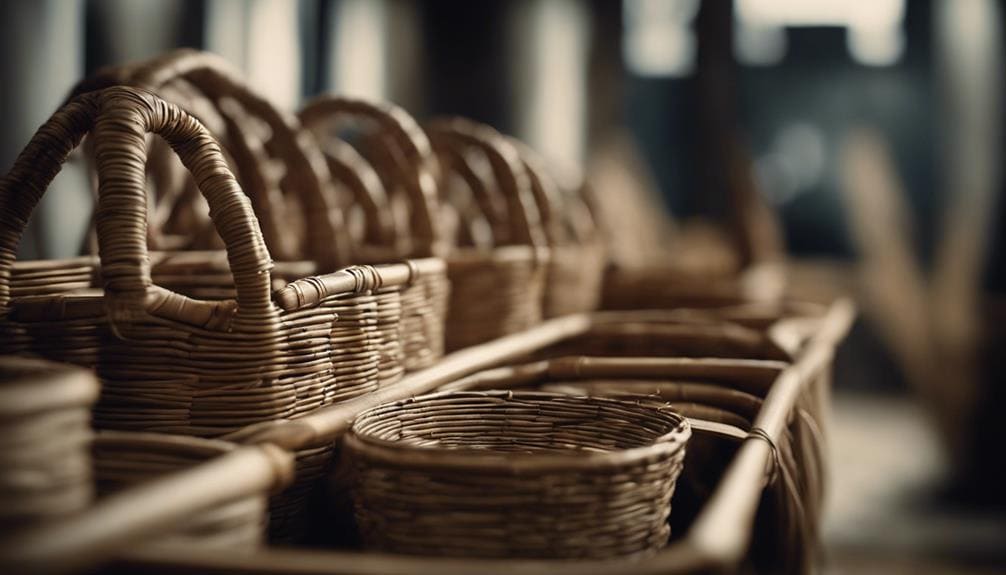
Continuing the legacy of traditional craftsmanship, the modern applications of rush reeds in basket-making showcase a blend of sustainability and contemporary design aesthetics. As artisans embrace the versatility of rush reeds, they are creating innovative designs that cater to the evolving tastes of today’s consumers.
- Innovative Designs: Modern artisans are pushing the boundaries of traditional basket making by experimenting with unconventional shapes, sizes, and patterns using rush reeds. These contemporary designs cater to various preferences, from minimalist to bohemian styles.
- Sustainable Materials: Using rush reeds in modern basket-making aligns with the growing demand for eco-friendly and sustainable products. Consumers are increasingly drawn to items crafted from natural materials like rush reeds, appreciating their biodegradability and low environmental impact.
- Artisanal Appeal: The rustic charm of rush reeds adds an authentic touch to modern basket creations, appealing to individuals seeking unique and handmade pieces. The craftsmanship involved in working with rush reeds showcases the dedication to preserving traditional techniques while adapting them to fit modern aesthetics.
Are Rush Reeds Suitable for Traditional Basket-Making Techniques?
Yes, rush reeds for basket weaving beginners are suitable for traditional basket-making techniques. Their flexible nature and easy handling make them perfect for beginners to practice and create beautiful, durable baskets. The natural material also adds a classic touch to the traditional craft.
Tips for Working With Rush Reeds
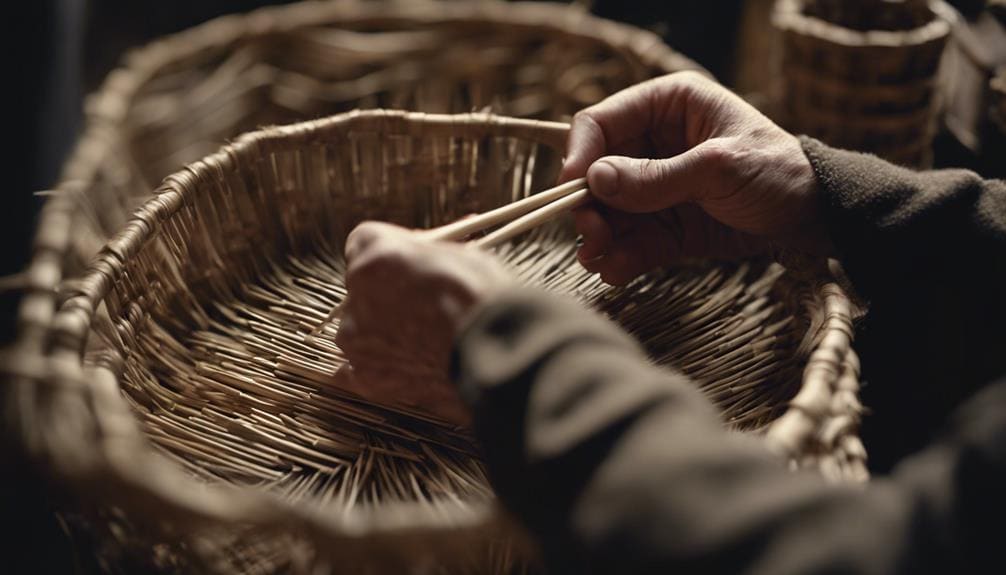
To effectively work with rush reeds in basket making, soaking them in water before weaving is essential to enhance their pliability. This step softens the reeds, making them easier to manipulate and weave into intricate patterns. When weaving with rush reeds, starting from the base and working upwards ensures a sturdy and well-structured basket.
Experimenting with different weaving techniques can lead to unique designs. Whether it’s a simple checkerboard pattern or a more elaborate twill weave, these variations can add character to your basket. Additionally, consider dyeing the rush reeds before weaving to introduce color and personal flair to your projects.
Proper maintenance is key to preserving the quality of rush reeds. Using a brush cutter to trim them to the desired length and securing the ends with nails or clips can prevent unraveling during weaving. These small steps can make a big difference in the longevity of your basket creations.
For project ideas, consider making a set of nesting baskets in varying sizes or a decorative woven tray. These items serve a practical purpose and showcase the beauty and versatility of rush reeds in traditional basket making.
Frequently Asked Questions
What Reeds Are Used for Basket Weaving?
When making baskets, I consider different materials for weaving. Each reed brings unique qualities to my craft. Understanding basket-making techniques helps me showcase the beauty and durability of my chosen reeds.
What Are the Best Sticks for Basket Weaving?
When crafting baskets, I prefer using natural materials like willow and rattan. These sustainable sticks provide the perfect blend of flexibility and strength. Selecting smooth, crack-free sticks is key for weaving ease and creating sturdy baskets.
How Long Does It Take To Soak Reeds For Basket Weaving?
I soak reeds for basket weaving to make them pliable and prevent cracking. The proper soaking involves warm water for 1-2 hours, adjusting for thicker reeds. This ensures ideal weaving conditions, avoiding softness or breakage.
How Do You Harvest Rushes for Weaving?
When harvesting rushes for weaving, I carefully cut them at the base, choosing those with a soft center and small flowers. Sorting by length and thickness helps me select the best ones. I find them in wetlands during peak growth in July and August.
Conclusion
Reflecting on the intricate process of harvesting and weaving rush reeds for traditional basket making, I am reminded of how each rush is like a thread in the tapestry of life. Just as we carefully select, shape, and intertwine these reeds to create beautiful baskets, so do we navigate the twists and turns of our journey, weaving together our experiences to form a unique and meaningful existence. Rush reeds truly embody the art of resilience and creativity.

